Summary
NIST’s Material Measurement Laboratory and Physical Measurement Laboratory are developing a first-of-kind X-ray testbed for operando monitoring of catalytic reactions. The testbed will provide unprecedented access to the behavior of carbon-based intermediates and the electronic structure of catalysts via a minimally invasive probe.
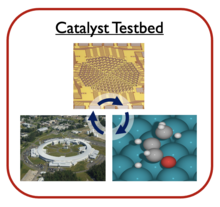
Description
Interested in collaborating? See below
What does this project do for industry?
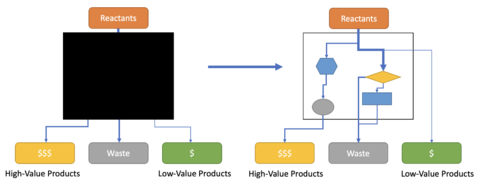
Current measurement techniques are unable to follow the reaction pathways during catalysis and are limited to observing only the end products or looking at catalysts outside of realistic reaction conditions. Our new Resonant Inelastic X-ray Scattering (RIXS) spectrometer, together with kinetic modeling and advances in theoretical spectroscopy, will identify specific intermediates and reaction pathways. With this knowledge, the catalysts can be improved to select for specific reaction pathways and desired end products.
What technical challenges are we trying to solve?
Existing RIXS beamlines require tens of minutes to hours per acquisition. This prohibits high-throughput operando measurements and leads to high X-ray doses that can damage the sample. By employing energy sensitive X-ray detectors, as opposed to traditional wavelength dispersive monochromators, we will greatly improve our collection efficiency while simultaneously lowering the required X-ray dose. This effort will require substantial improvements to the design and fabrication of the transition-edge sensor arrays as well as new beamline technologies to separate the high-vacuum of the X-ray beam path from a sample at ambient pressure and high temperatures.
The Team
Theory
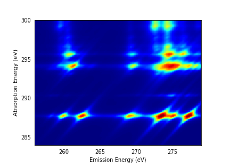
The theory team (Tom Allison and John Vinson) develops tools to determine the likely movement of atoms and molecules during reactions and, from these atomic arrangements, predict the resulting X-ray spectra.
X-ray Detector
The detector team (Galen O’Neil, Joel Ullom, Kelsey Morgan and more in the Quantum Sensors Group) is developing the most powerful soft X-ray detector for carbon chemistry by more than 100x. We rely on microcalorimeters operating below 100 mK for high efficiency and excellent energy resolution.
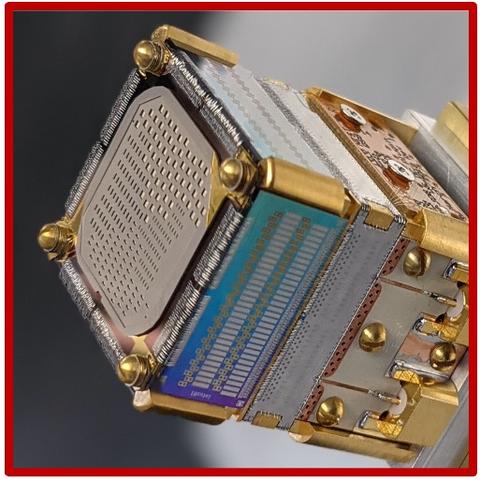
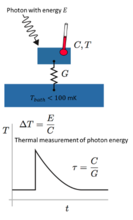
Beamline & reaction chamber
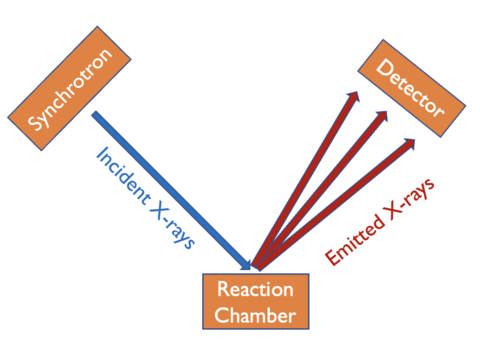
The beamline and reactor team (Charles Titus, Daniel Fischer, and Evan Jahrman) is developing reaction chambers compatible with both real-world reaction conditions and the requirements of soft X-rays. These experimental set-ups will be integrated with NIST’s soft X-ray beamline, SST-1, located at NSLS-II.
want to be involved?
We have two different mechanisms for collaborating with us on this project:
The NRC Postdoctoral Program
The NRC research associateship program has opportunities for research related to this project (eligibility requirements include US citizenship). If you are interested or have any questions, please email the researchers listed on the NRC postings. Application are evaluated twice a year, Feb 1 and Aug 1, and we recommend contacting potential advisors well in advance of these deadlines.
- First-Principles Modeling of Electronic Structure and Near-Edge X-Ray Spectroscopy
- Superconducting Detectors for Photons from Millimeter Waves through Gamma Rays
- X-Ray Science with Superconducting Sensors
-
Chemical Speciation on Heterogeneous Surfaces and Interfaces
Research Collaborations
Collaborations are available to US and non-US citizens. Please email the contacts in individual collaboration descriptions below for more information.
Spectrometer collaboration
We are seeking a postdoc collaborator to work with NIST researchers to help us build the most efficient X-ray spectrometer for carbon chemistry using sub-Kelvin transition edge sensor microcalorimeters. This effort requires breakthroughs in superconducting device design, microfabrication, digital signal processing and many other areas. A strong experimental background is required, experience with one or more areas we’ve called out above is valuable. Don’t feel like you have to tick all the boxes, we need strong experimentalists with many different backgrounds. Potential collaborators with a PhD or soon to have a PhD in chemistry, physics, electrical engineering, mechanical engineering or related fields are encouraged to contact galen.oneil [at] nist.gov (galen[dot]oneil[at]nist[dot]gov).
The spectrometer team is located in Boulder, CO.

